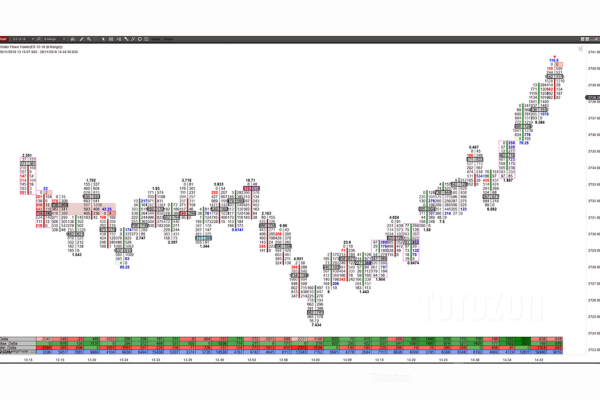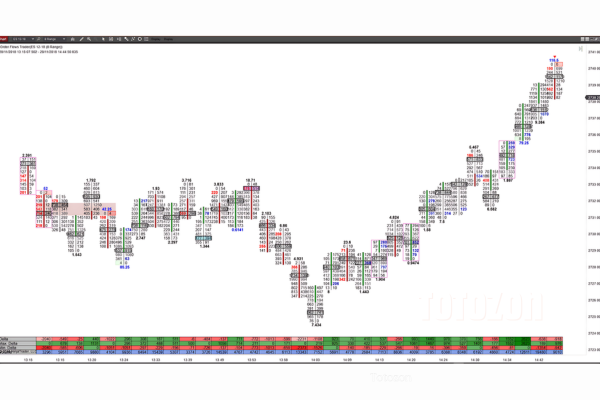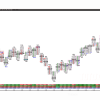Order Flow With The Power Of Point Of Control Course and The Imbalance
$6.00
File Size: Coming soon!
Delivery Time: 1–12 hours
Media Type: Online Course
Order Flow With The Power Of Point Of Control Course and The Imbalance
Introduction
Understanding the intricacies of order flow and the power of the point of control (POC) is essential for any serious trader. This article explores the details of these concepts, offering insights into how they can be leveraged for better trading decisions.
What is Order Flow?
Order flow refers to the buying and selling activity in the financial markets. It provides a real-time view of market dynamics, revealing the intentions of traders and the forces driving price movements.
Why Order Flow Matters
- Market Sentiment: Order flow helps us gauge market sentiment by showing the volume and direction of trades.
- Price Movement: It reveals the underlying factors behind price movements, offering a clearer picture than traditional indicators.
The Power of Point of Control (POC)
The point of control is a key concept in market profile analysis. It represents the price level at which the highest volume of trades occurs, indicating the most significant area of interest for traders.
Understanding POC
- Volume Profile: POC is part of the volume profile, which shows the distribution of trading volume across different price levels.
- Significance: The POC is considered a fair price, where supply and demand are balanced.
How to Identify the POC
- Volume Data: Analyze the volume data for the trading session.
- Price Levels: Identify the price level with the highest volume.
- Mark the POC: This is your point of control.
Order Flow and POC in Trading
Combining order flow analysis with the POC provides a powerful toolkit for traders.
Entry and Exit Points
- Entries: Look for high-volume areas near the POC to enter trades.
- Exits: Use the POC to determine optimal exit points, minimizing risk and maximizing profit.
Market Trends
- Trend Confirmation: Confirm trends by analyzing the alignment of order flow with the POC.
- Reversals: Identify potential reversals when price moves significantly away from the POC.
The Imbalance Concept
Imbalance refers to a situation where buying and selling volumes are unequal, often leading to price movements.
Types of Imbalance
- Buy Imbalance: More buying volume than selling, indicating bullish sentiment.
- Sell Imbalance: More selling volume than buying, indicating bearish sentiment.
Detecting Imbalances
- Volume Analysis: Monitor the volume of trades on the bid and ask sides.
- Price Movement: Observe rapid price changes that often accompany imbalances.
Using Imbalances in Trading
Identifying and leveraging imbalances can enhance your trading strategy.
Trade Entries
- Buy Imbalance: Enter long positions during a buy imbalance.
- Sell Imbalance: Enter short positions during a sell imbalance.
Risk Management
- Stop-Loss Placement: Place stop-loss orders at levels where imbalances reverse.
- Profit Targets: Set profit targets based on the continuation of imbalances.
Combining Order Flow, POC, and Imbalance
Holistic Analysis
By combining these concepts, you can develop a comprehensive market view.
- Order Flow: Provides real-time market sentiment.
- POC: Identifies key price levels.
- Imbalance: Highlights potential price movements.
Practical Application
- Analyze Order Flow: Start with a real-time analysis of order flow.
- Identify POC: Determine the POC from the volume profile.
- Detect Imbalances: Look for buy or sell imbalances to inform your trading decisions.
Case Studies
Case Study 1: Stock Trading
A trader identified a strong buy imbalance near the POC of a tech stock, entering a long position that yielded a 15% profit in two days.
Case Study 2: Forex Trading
In the forex market, a trader used order flow and POC to identify a significant sell imbalance in the EUR/USD pair, resulting in a profitable short trade.
Conclusion
Mastering order flow, the power of the point of control, and the concept of imbalance can significantly enhance your trading strategy. By integrating these tools, you can gain deeper market insights and make more informed trading decisions.

Commonly Asked Questions:
- Business Model Innovation: Accept the truth of a legitimate business! Our strategy is organising a group buy in which participants share the costs. We use these cash to acquire popular courses from sale pages and make them available to people with limited financial resources. Despite the authors’ worries, our clients love the cost and accessibility we give.
- The Legal Environment: Yes or No The legality of our activity is ambiguous. While we don’t have specific permission from the course authors to resell the material, there is a technicality at work. The author did not specify any limits on resale when purchasing the course. This legal intricacy is both an opportunity for us and a boon for individuals looking for low-cost access.
- Quality Control: Uncovering the Truth
Getting to the heart of the issue – quality. Purchasing the course straight from the sale page guarantees that all documents and resources are the same as those obtained through traditional channels.
However, we distinguish ourselves by going beyond personal research and resale. It is crucial to note that we are not the official course providers, which means that the following premium services are not included in our package:
- There are no scheduled coaching calls or sessions with the author.
- Access to the author’s private Facebook group or web portal is not permitted.
- No access to the author’s private membership forum.
- There is no direct email support available from the author or their team.
We operate independently, with the goal of bridging the pricing gap without the extra services provided by official course channels. Your comprehension of our distinct approach is much appreciated.
Be the first to review “Order Flow With The Power Of Point Of Control Course and The Imbalance” Cancel reply
You must be logged in to post a review.
Related products
Forex Trading
Forex Trading
Forex Trading
Forex Trading
Forex Trading
Forex Trading
Forex Trading
Forex Trading
Forex Trading






















Reviews
There are no reviews yet.